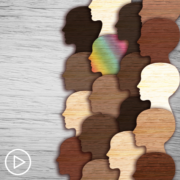Roadblocks for Black and Latinx Patients From CAR T Trial Access
Roadblocks for Black and Latinx Patients From CAR T Trial Access from Patient Empowerment Network on Vimeo.
What are CAR T-cell therapy roadblocks for Black and Latinx trial access? Expert Dr. Sikander Ailawadhi from Mayo Clinic discusses barriers that have been documented in clinical research and solutions and patient advice for overcoming barriers.
[ACT]IVATION TIP
“…please seek out a specialist center that specializes not only in myeloma, but also in CAR T and in clinical trials, and even at that center, seek out the physician who has part an experience of participating in clinical trials.”
Download Guide | Descargar Guía
See More from [ACT]IVATED CAR T
Related Resources:
Transcript:
Lisa Hatfield:
Dr. Ailawadhi, there is so much promise around CAR T-cell therapy, but barriers exist. Can you speak to the roadblocks that prevent Black and Latinx patients from participating in CAR T-cell therapy trials that you have witnessed?
Dr. Sikander Ailawadhi:
Lisa, this question about healthcare disparities and access to care, especially based on patient race ethnicity, it’s very near and dear to my heart. I do a lot of work around this and also a lot of research. Not just for CAR T, data has been very clear over years and decades that in multiple myeloma and frankly, in all cancers also. Clinical trial access is dismal when it comes to African Americans and Hispanic patients. Unfortunately, a lot of that data does not even exist about Hispanic patients.
But the publications are very clear with, so we’ve had one publication of ours, and then there has been one other from national data where FDA-approved drugs clinical trials were evaluated. And it was noted that while African American patients make up about 20 percent of the U.S. myeloma population, less than 5 percent of them participated in clinical trials that led to FDA approval of myeloma drugs.
I’m not saying that is specific for CAR T. In recent years when the CAR T trials were happening, the numbers have improved a little bit. They’re still not the same numbers representing myeloma population in the US, but some improvements happened, for sure. The barriers to getting onto CAR T and clinical trials related to such resource and time intensive treatments are multifactorial.
A lot of times they are sociodemographic, patients need to take time away from work. They have to have a caregiver, they have to have appropriate insurance approvals for certain things. They have to be able to go to a center that may be close to them. These centers are hopefully going to be able to bring some other resources like social workers, navigators, et cetera, to help that patient get onto the trial. And then there is sometimes lack of awareness of CAR T, lack of awareness of clinical trials per se, clinical, and there are fears, anxiety, scares around getting on clinical research.
Lots of barriers, I think we can systematically take care of mitigating them. I would again say, just as I mentioned previously in a different context, one simple way of trying to overcome barriers or at least making attempts to overcome barriers, is to get to a center that specializes in CAR T, that specializes in clinical trials and speak with an expert, a physician who has a clinical trial track record.
Patients can research all of this, and if that falls in place, I’m sure some of these access barriers and some of these disparities can be overcome. My activation tip for this question is, please seek out a specialist center that specializes not only in myeloma, but also in CAR T and in clinical trials, and even at that center, seek out the physician who has part an experience of participating in clinical trials.
Share Your Feedback
Create your own user feedback survey







